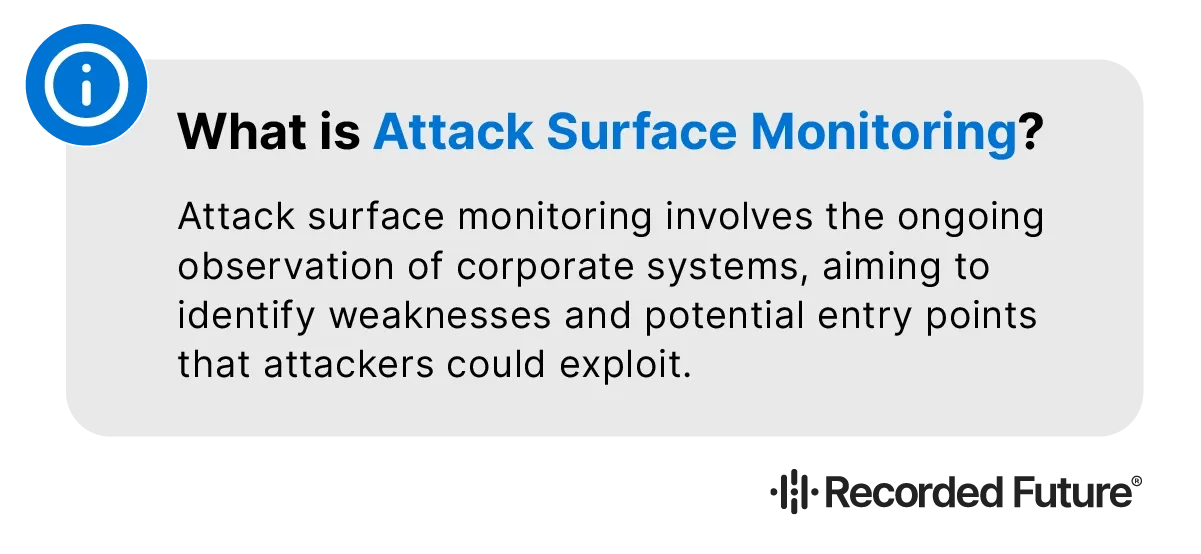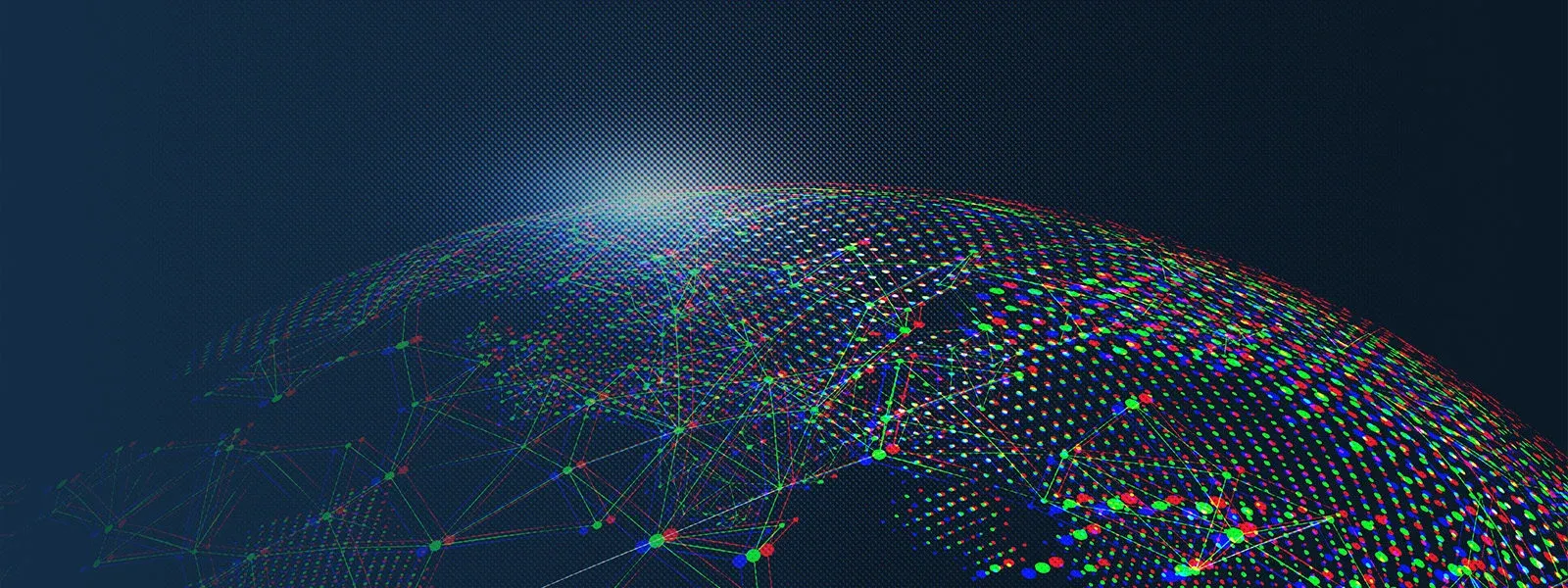What is Attack Surface Monitoring?
What is attack surface monitoring, and why should it be at the top of your cybersecurity strategy?
As your organization’s digital infrastructure expands, so does its exposure to cyber threats—an ongoing challenge highlighted by a 2022 study from Gartner. This study identified the widening of attack surfaces as a critical focus area for Chief Information Security Officers.
This reality applies to organizations of all sizes, making comprehensive monitoring an essential defensive measure. That is why, in this article, we will take a direct look at how monitoring your attack surface can safeguard your assets from cyber risks. Let’s begin!
Key Takeaways
- Attack surface monitoring entails continuous surveillance of corporate systems to detect vulnerabilities and potential access points that could be exploited by attackers.
- Effective Attack Surface Monitoring starts with asset discovery, identifying and prioritizing security risks by severity. It includes a swift vulnerability patch process, comprehensive endpoint monitoring, and real-time alerts for immediate changes. This approach ensures proactive defense and continuous security management.
- Organizations must address challenges in both internal and external attack surfaces, with a focus on cloud asset security, external attack surface management (EASM), and integration of advanced techniques like threat intelligence and vulnerability management tools to optimize their security posture.
What is Attack Surface Monitoring?
Attack surface monitoring involves the ongoing observation of corporate systems, aiming to identify weaknesses and potential entry points that attackers could exploit.

This process is part of a larger approach known as Attack Surface Management (ASM), which uncovers potential security vulnerabilities within an organization’s network, providing comprehensive visibility into all assets and their associated vulnerabilities.
As an organization broadens its digital footprint (especially in the cloud), maintaining visibility against the tactics of cybercriminals becomes vital, making ASM a fundamental pillar of a solid cybersecurity strategy.
The Expanding Attack Surface
The attack surface encompasses various potential points of contact that an attacker may exploit within an organization’s IT environment. Assessing and mitigating these vulnerabilities is a key step to bolster overall cybersecurity and reduce the organization’s attack surface. This includes various types of assets like:
- Networks
- Devices
- Applications
- Systems both on-premises and in the cloud.
Today’s attack surface extends beyond known IT infrastructure, encompassing potential points of contact that unauthorized IT systems, software, devices, services, and applications—collectively known as shadow IT—might offer to an attacker.
The Importance of Continuous Attack Surface Monitoring
Due to the dynamic nature of digital environments that evolve with new technologies, infrastructure changes, and organizational developments, continuous monitoring is integral in managing the attack surface. This continuous process enables prompt detection of new vulnerabilities, weaknesses, and misconfigurations. By facilitating swift response, it significantly contributes to mitigating potential security threats.
Organizations can employ ongoing monitoring strategies for consistent defense against digital attacks, leveraging tools like SIEM and EDR, along with ASM services.
Essential attributes of a robust attack surface monitoring solution includes activity recording, which maintains logs of all data access attempts. It also features anomaly detection that monitors for unusual behavior and high request frequencies, alerting to potential irregularities.
Additionally, it performs security assessments by examining apps and software for security weaknesses and areas that require improvement. Lastly, it includes risk management strategies to spot potential data breaches and establish effective countermeasures.
5 Key Benefits from Attack Surface Monitoring Solutions

Real-time visibility of your digital footprint
As stated, attack surface monitoring begins with visibility into all the assets owned by an organization and its third parties that contain or transmit sensitive data. Because it's imperative to fully know and understand your entire IT infrastructure, attack surface monitoring takes it one step further to provide real-time visibility into all digital assets and the changes they undergo.
As one's attack surface is constantly evolving, having this continuous visibility into their state, location and overall security rate is critical in understanding your digital footprint and the attack surface risks that could lead to a cyber attack.
Continuous assessment of your security posture
Full- and real-time visibility into all of your digital assets means attack surface monitoring also empowers you to be aware of your security posture at any point, allowing you to determine your ability to manage risks and attacks in due course.
The state, location and vulnerability of your digital assets will inform your resilience to cyber attacks—and doing it continuously will allow assessment of your security posture as your attack surface evolves. This in turn will inform a more robust security program and where your attention should be focused.
Manage security risk decisions
If not addressed quickly and properly, many security issues and problems with your attack surface can lead to disruptive data breaches.
Continuous attack surface monitoring will allow you to secure your environments as potentially dangerous changes occur, and being proactive means you can prevent attacks rather than react to them.
Once you know and understand the risks of your digital assets and the possible entry points for attackers, you'll be able to make better decisions for managing cybersecurity risk.
Speed up remediation
Now that you're aware of all the risks and vulnerabilities in your attack surface and digital assets, you can work on prioritizing remediation efforts for each of them.
With the "continuous" factor of attack surface monitoring you're aware of a risk as soon as it appears in your infrastructure, giving you the chance to resolve impending issues and optimize your cybersecurity defense.
Ensure compliance
Data loss prevention trends are growing, such as government-imposed mandatory regulations like GDPR, HIPAA, PCI DSS, as well as organizational security policies about handling sensitive data.
These compliance regulations secure personally identifiable and other sensitive data, and breaching them can lead to hefty fines for the organizations, not to mention the reputational damages they might suffer.
Attack surface monitoring allows an organization to discover any failure to comply with regulations and organizational security policies, an efficient way of avoiding any repercussions they might cause.
Enter Attack Surface Intelligence
Recorded Future’s Attack Surface Intelligence is a full External Attack Surface Management solution that includes the best attack surface monitoring system, with proactive asset discovery and exposure alerts so you can be on top of any emerging threats right in time.

Recorded Future’s Attack Surface Intelligence equips security teams with the actionable insights needed to anticipate and mitigate potential breaches. We provide analysts with automated tools for the constant discovery and attribution of external assets, ensuring a real-time and comprehensive inventory is accessible within an intuitive dashboard.
We specialize in the detection and ranking of exposures, tackling everything from critical CVEs to misconfigurations and unsecured admin panels. Our platform's actionable risk analysis is designed to prioritize these vulnerabilities, delivering an all-encompassing approach to external attack surface management.
Attack surface monitoring best practices
We mentioned that attack surface monitoring is usually a part of an attack surface management solution, but there are some best practices to follow regardless of whether you're putting checkmarks in your chosen External Attack Surface Management solution and their monitoring abilities, or taking on the process of attack surface monitoring as a standalone methodology.
Here are some key practices for achieving effective attack surface monitoring, which should be incorporated in the ASM solution you choose:
Identify and prioritize
Continuous monitoring of all digital assets an organization owns is both resource-intensive and expensive. Not every organization has the team, resources and budget needed to do it. This is why organizations need to identify and prioritize their monitoring efforts and focus on their most important assets.
Assets need to be sorted based on their criticality, whether they hold sensitive information, which sensitive information, how vulnerable they are and what business importance they hold.
Thorough prioritization helps to ensure that attack surface monitoring can be used effectively for organizations of all sizes, and safeguards its effectiveness. Likewise, focusing on the wrong area can lead to unnecessary spending of resources (including money) and potentially missing a data leak or cyber attack.
Establish a vulnerability patch process
As you identify and monitor your assets, vulnerabilities and weaknesses will show up on them. It is vital to not only continuously remain aware of all the vulnerabilities that can be exploited in your network, but also to have a patch management process in place that helps acquire, test and install patches on your network's existing services and applications.
An effective patch management process will ensure all bugs are fixed as quickly as they arise, enabling all of your systems and applications to stay updated to their latest version. Their appropriate patches will ensure that no CVEs you might have in your digital assets are exploited.
Don't forget the endpoints
Phishing emails are one of most common social engineering tactics malicious attackers employ to gain access to your system. An unsuspecting employee could click on a wrong link, and that would be all it takes for attackers to make their way into the network and wreak havoc from there on.
Many organizations focus their efforts on digital assets but forget one crucial component of their attack surface: endpoints. This is why continuous attack surface monitoring also needs to concern your endpoints (including laptops, desktops, servers, mobile devices, IoT, etc.) in order to detect, protect against and prevent emerging threats from taking effect on those devices.
Be alerted of any changes as they take place
Attack surface monitoring activities can prove easier for smaller organizations, which can even employ manual methods to achieve it. However, automation is the secret key to full efficiency of your monitoring efforts, speeding up the entire process and making it more manageable.
This is usually empowered by solutions and systems that provide real-time alerts and notifications of any changes on your infrastructure, provide insight into what those changes are, and inform security teams regarding the criticality and power of decisions regarding remediation if security risks are involved.
Leveraging Threat Intelligence
Threat intelligence plays a pivotal role in enhancing attack surface analysis. Here are some key strategies to consider:
- Analyzing user and attacker behavior
- Setting up intruder traps
- Conducting proactive threat hunting
- Integrating real-time intelligence
By implementing these strategies, organizations can identify emerging threats and potential attack vectors. Recorded Future's Intelligence Cloud, offers security teams strategic advantages through focused digital risk insights and contextual information on vulnerabilities.
Conclusion
In summary, managing an organization’s attack surface is an integral part of a comprehensive cybersecurity strategy. From understanding the fundamentals of attack surface monitoring to leveraging advanced analysis techniques, organizations must adopt a proactive stance to safeguard their digital assets.
Stay ahead of threats and reinforce your defenses with Recorded Future's advanced Attack Surface Management solutions. Book a demo with us to see how we can transform your security strategy and keep your digital assets secure.

Esteban is a seasoned security researcher and IT professional with over 20 years of experience, specializing in hardening systems and networks, leading blue team operations, and conducting thorough attack surface analysis to bolster cybersecurity defenses. He's also a skilled marketing expert, specializing in content strategy, technical SEO, and conversion rate optimization. His career includes roles as Security Researcher and Head of Marketing at SecurityTrails, before joining the team at Recorded Future.
Related News & Research



